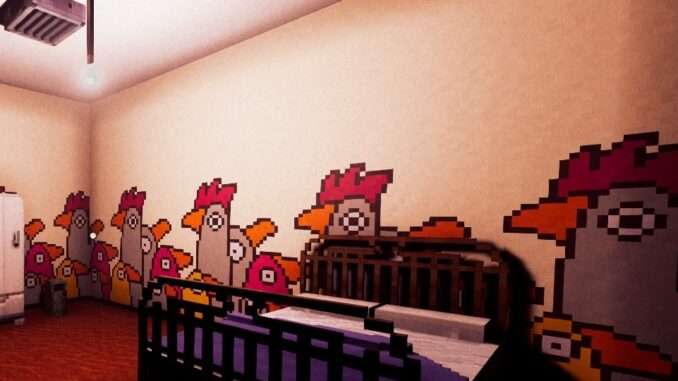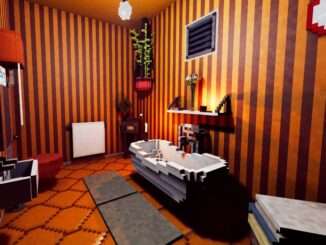
How to track people down and stay alive.
Trade Tricks
Introduction
When I first started out, I felt lost and confused. 12 hours in and I felt like a grizzled veteran, solving cases left and right within a few in-game hours. This guide will tell you what I learned. It’s sort of a “what I would tell my past self” sort of guide.
You may want to hold off on reading it, as it can be fun to learn these things on your own. One of this game’s strong points is that you’re effectively teaching yourself how to be a hard boiled detective.
Daily Living
Life
You arguably exist even when you’re not investigating a murder. Accordingly, here’s how to do that in a comfortable manner.
- Money
- This is very tight at first, but rapidly becomes a joke. Take side jobs (found posted on boards at businesses and Civil Hall) until you have a decent place to live, a full set of equipment, and food money. After that, money from murder cases will easily cover your expenses.
- Hunger
- Easily dealt with using vending machines. Go with the $3 donut, since it’s enough to take you from full hunger to no hunger.
- Thirst
- A joke. Find any water cooler (there’s one in Civil Hall), and you have infinite free water. You can buy one for your apartment, too. Wish it was this easy in Zomboid.
- Warmth
- Pretty darn hard to deal with. You’ll inevitably get cold when you’re outside for long enough. Warming up from being inside takes forever, so I recommend waiting by a fire barrel. You can also buy heat packs, but the real winner is coffee. It’s cheap, it’s easy to find, it warms you up, it provides a temporary stat boost, and it’s a drink.
- Shelter
- Not strictly necessary, but very comfy. Apartment listings are posted next to jobs. As you progress, you get better options. Your apartment will start out with no furniture, and you have to buy furniture by opening your inventory and pressing the “edit decor” button. You’ll want at least a bed, shower, towel rack, and water cooler.
- Dryness
- You WILL be caught out in the rain, you WILL get wet, and NO there is no umbrella. Wetness makes you sometimes Slip ‘N Slide when you try to run. It sorts itself out well enough, but I recommend having a towel rack at home so that you can dry off.
In the early game, you’ll want to hustle and make money. When you get tired of that, you can just sleep in your apartment as you await the next murder.
Equipment
Essentials. The sort of thing I always want in my inventory.
- Camera
- Required for many tasks. Helps investigations by giving you a photographic reference of people and crime scenes. You should always have one. Be prepared to run when you take pictures of people, though.
- Handcuffs
- Required to arrest perps. Also REALLY useful when you’re breaking and entering. Just handcuff anyone who might give you trouble. No more mass brawls at crime scenes. You should ideally carry 2, since apartments often have 2 occupants.
- These are supposed to give you favorable interrogation options, but I find that this feature breaks more often than not. The ability to remove the handcuffs also rarely works.
- Newspaper
- Surprisingly OP. Only $5. Raising it with right mouse button causes you to enter a hiding state, making it much easier to escape pursuers. If you wait a bit, it can also give you details about your current murder investigation. Sometimes evidence (like scrawled messages) will be impossible to find, but the newspaper can tell you all about it. Currently seems to update automatically over time, like magic. Very good paper, very good friend.
- Lockpicks
- Although bashing doors down does heavily reduce the number of picks you need, you’ll still want these from time to time. They’re really cheap. Just buy a pack from Civil Hall and you’ll probably never run out.
- Ballistic Vest
- Passively reduces damage, especially from guns. Very useful for when an Enforcer gets the drop on you. You can sometimes find them lying around. Otherwise, I wouldn’t buy one unless I were rich.
Honorable mention:
- Bloodhound Tracker
- You can plant it on people to view them on the map, or plant it on a wall to alert you when someone comes near. Rarely relevant, but very useful in some situations.
Sync Disks
None of these are required, but there’s no downside to installing them. Most of them are fairly useless, but some of them are crazy. If you find Community or Physique, then make sure to take the extra inventory slots. That lets you carry the essentials without your inventory getting full.
When I played, I kept getting confused because I couldn’t use a Sync Disk that I stole. Eventually I realized that I already had that specific upgrade installed. There’s no good reason to make that mistake, but maybe someone reading this will become a lot less confused as a result.
Key Locations
- Civil Hall
- Required to get your case resolution forms. Useful things like water coolers and Sync Disks (that you can steal) can be found here. Also has a phone, directory, job board, and Enforcer computer terminals. More on those later. This is also where the Enforcer Headquarters are located.
- Pawn Shops
- A place to sell your stolen items.
- Black Market Traders
- Can be found randomly in various seedy places, like basement floors and fenced in yards. Lets you buy useless things like guns and ammo. You need a password, which can be found written on walls in graffiti. I would think that you could get a better deal on stolen goods here, but I haven’t verified this and I honestly doubt it.
Sleuthing
Whether you feel like Watchmen’s Rorschach or a detective-themed magical girl is up to you. In any case, it’s time to get acquainted with the various felonies that make up your arsenal of investigative techniques.
Breaking and Entering
The tutorial teaches you many options for this, but there’s really only one technique you need. Knock on the door to see if anyone’s inside. When that person is about to open the door, run at the door and right click in order to slam yourself into it. Try not to think “BOOM” or “POW” as the one on the other end goes flying like a ragdoll, as that’s more than likely an innocent person that you just concussed. This is also a useful technique for fights, as it’s an instant knockout.
A more sensible technique is to wait for the person to open the door, and then just walk behind him and slap some handcuffs on him. A lot less dramatic, but a lot more quiet.
Sneaking around in vents or picking the door’s lock is honestly not worth it. It’s neat if you want to make a more discreet entrance, but you’ll still have to deal with whoever’s inside. Not worth it.
MAYBE consider asking the person who lives there for permission to search. But come on. How lame is that?
- Ransacking
- Looking around a crime scene isn’t very hard. Just make sure to check the trash cans. Here’s a list of the things you’ll want to find.
- Fingerprints
- The perp’s fingerprints aren’t always there. You should always check, though.
- Crumpled paper, scrawled messages
- This usually tells you what sort of killer you’re dealing with, and the paper sometimes has the perp’s fingerprints.
- Any and all notes
- These typically tell you computer passcodes and work schedules.
- Birth certificates, apartment contracts, employment contracts
- You’ll sometimes find a box or drawer that contains all of these. Very useful for gaining the birth dates, addresses, and workplaces of the people you’re investigating.
- Work IDs, wallets
- Keys, money, info. Woohoo.
- Computer
- I know it’s called a Cruncher. Shut up. Anyway, you can read people’s emails and find some of their personal info. Currently not that useful. Hopefully that changes.
- Murder weapons
- Usually found on the perp’s person, but sometimes just randomly lying somewhere.
- Phone
- Rarely, you can find the number of the one who last called the victim’s phone. (Remember that there’s a tab next to the keypad that shows you stored numbers).
- Money money money
- Steal everything
Canvassing Witnesses
An easily overlooked step, but it’s way OP. Ask the neighbors whether they’ve seen anything suspicious. Ask anyone whether they’ve seen anything suspicious. Usually they won’t give an answer, but sometimes they do. When they do, compare the time of the sighting to the time of the crime. If it’s a rough match, then you’ve almost certainly just been given a concrete description of the perpetrator. Descriptors like “looked angry” or “in a hurry” are, to my knowledge, always indicative of a murderer.
The other thing to ask is if they know a person. You need a valid photo for this to work. More on that in the next section. Most of the time you’ll be answered with a vague “I saw them at [LOCATION]”, but sometimes you’ll get “That’s my neighbor. Her name is [NAME]. She likes hockey.” That’s paydirt.
Also note that homeless people all call each other their neighbors. It’s very weird.
Checking Surveillance Footage
SOME but not all buildings have an office that lets you view surveillance camera footage. Check for an office by looking at the rooms on the map. Undiscovered offices will get a “?” label, as opposed to “apartment” and such. These offices also usually have blueprints that you can pick up in order to have the entire building detailed on your map.
If your victim was found in a building with a security office, then you have it easy. My last 3 cases all took place in the same building. Each one was solved on the same day, just by going to the office and checking the footage. “Oh look, there’s the killer.”
I think the tutorial is a bit confusing on this matter, so let me explain. When you find a spot in the timeline that you’re interested in, you hit the print button. This gives you the photo that you saw on the screen. While looking at the photo in your F menu, click on the tab that says “Connections”. This lists every person in that photo. Click on the entries listed here, and you can add these suspects to your board. You now have a valid photo and physical description of the suspect.
Your victim will frequently be murdered in a place with no cameras, or a place with cameras but no office. Cameras are still useful even then! Just ask around and hopefully someone will tell you about seeing a suspicious person at around the time and place of the crime. You can then go to the location of the sighting and see if there were any cameras nearby. There are security cameras on posts around the city, and it’s likely that they captured the perp on the way to or from the crime.
Corporate Espionage
Workplaces are excellent for doxxing people. They usually have a board listing every single employee, giving you plenty of names and faces to work with. Sometimes there is no board, so you have to rummage around for a filing cabinet containing the personnel folders. This is another place where asking people for information is effective.
The Government Database
This is a method strong enough to be considered “easy mode” by some. Gain access to an Enforcer computer terminal, and you’ll find a list of (I think) every single person in the game. Not only that, but it has most of their personal information as well (even fingerprints).
Use it or don’t. If you do use it, you have a simple way to convert a name into an address. If you don’t, then you’ll have to ask around a lot more until eventually someone gives you a name.
Identifying the Unidentified
This is the core of the game. Murder cases and side jobs both boil down to this. You’re given a few personal details of a subject, and you have to figure out more of them. Murder cases are, strangely, generally easier than side jobs. Murder cases give you lots of witnesses, camera footage, and evidence. Meanwhile, side jobs can be like “here’s the subject’s salary and handwriting, now get to work”. Here’s a sort of flow chart for turning information into more information.
Info – Method
- Photo – Ask around
- Name – Find a phone book or Enforcer database
- Full Address – Go there, bro
- Partial Address – Go there. Look for an office. Kick down the door, then look through the files on the occupants. This might not show you every occupant.
- Phone Number – Call the number, then go to your building’s power room and find the call logs
- Fingerprints – In a murder case, just trust that you’ll find more later. In a side job, scan mailboxes in the hopes of finding a match on one of them.
- Workplace – Go there. Search for a list of employees (either a board, or a set of files).
- Physical Descriptors (build, hair color, etc.) – Search through surveillance footage for potential matches. When you find one, ask around. Repeat.
- Handwriting – Look through random offices, checking the employee and resident records. They have handwriting samples.
- Job Title, Salary – Very rough. Just pick a business that seems vaguely accurate, then break into its office.
I don’t claim that any of this will be easy. Only that these methods are even slightly better than running around inspecting people at random. If anyone has better methods, let me know.





Be the first to comment